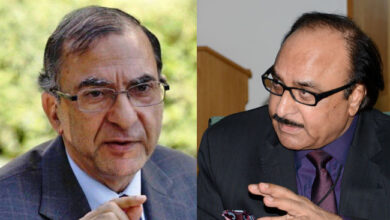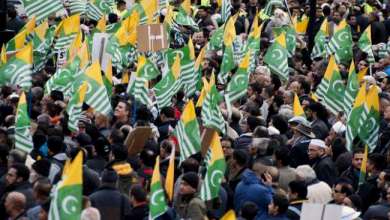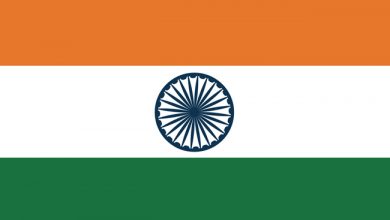The Aaland Islands Model and Kashmir

Dr. Ghulam Nabi Fai
There are some disputes in modern history that one might take lessons from in understanding the wisest course to take in resolving the Kashmiri dispute.
The Aaland Islands is a case in point, as are South Tyrol, Trieste, Andorra, and Northern Ireland, each of which was contested by neighboring countries. Finland and Sweden both coveted The Aaland Islands; South Tyrol was in dispute between Austria and Italy; Trieste was divided between Italy and Yugoslavia; Andorra is a small principality. Virtually all of these cases, the country in question was seized or split in two in the course of war between neighboring countries.
Understanding the Aaland Islands means seeing its problems in the larger context of Finland, Sweden and their political and social milieu. Finland had been an integral part of the Kingdom of Sweden for six centuries. They had shared a common culture together, Finns spoke Swedish and Swedes spoke Finnish. But the Finns and the Swedes were different. The Swedes were of Germanic origin, of Viking stock, as were the Norwegians and Danes, imposing as they did one of the earliest empires in history on Northern Europe, and dominating other cultures in the region. They were agrarian, settled and lived from what they grew, not from what they found or captured. But despite having a common monarch, Sweden was Sweden and Finland was Finland.
Finnish people are often called the white Eskimos. They have a nomadic oriental heritage (by some historians regarded as “the lost tribe of the Mongols). They shared common heritage with other people who had settled around the Baltic Sea, including Estonia and Hungary, known as the Finn-Urgics, whose origins were rooted in the Ural Mountains of Russia in a marriage, literally, by Ghengis Khan, leader of the Mongols, to a young teenage Hun bride. The Ural Mountains had been settled by the Mongols during the rein of Ghengis Khan, occupied then by the Huns, a people who had migrated north from the Middle East, a people said to have originated in one of the Abrahamic tribes.
The languages of Sweden, Norway and Denmark are of Indo-European origin. However, they have virtually nothing in common etiologically with the language of the Finns. The Finns were mystical, pantheistic, with shamanistic practices. The Swedes followed the Pope.
In 1808, things changed. After six centuries of Swedish rule, Finland was invaded by Russia in a war against Sweden, seeking greater access to the Baltic for greater military and economic strength. Finland’s eastern border is shared by Russia. Its western border was primarily the Gulf of Bothnia, gateway by way of the Aaland Islands to the Baltic Sea.
A little more than a year later, Russia forced Sweden to secede Finland on September 2, 1809 in the Treaty of Fredrikshamn. Under the Russians, Finland became the autonomous Grand Duchy of Finland, allowing them a certain amount of political power in return for the advantages of access to the sea. The Aaland Islands, occupied by Swedish people, was severed from its ties to family and relatives, and made a part of the duchy.
However, such a deal could not have anticipated the overthrow of the Russian monarchy and the Bolshevik revolution in 1917, when Finland declared independence. Under the Swedes, Finland had also enjoyed some autonomy, so her independence with the downfall of the Tsar and major upheaval going on in Russia was a default instinct.
That declaration created then a new power struggle and civil war in Finland to fill the vacuum between conservative pro-Finnish “Whites” and a communist faction in the labor movement that was pro-Bolshevik and pro-Russian who were known as “Reds.” Aside from such political differences, independence had also been spurred by Russian Tsar Nicolas II’s plan for the “Russification” of Finland, which imposed serious cultural, language and religious restrictions on Finnish traditions from 1905 on. Russia’s attitude toward the Finns was identical to current Indian attitudes toward Kashmir. The tsar intended to abrogate their autonomous status and incorporated them fully into the Russian state.
Finland’s resistance led finally to full independence from Russia. But it was not through war. With the Tsar overthrown, the new government already had its hands full, and the Bolsheviks had already announced that any ethnic groups that were not Russian were free to choose their own course through self-determination. Finland chose to do just that.
(Part two)
The Aaland Islands had already petitioned the Russians to secede from Finland and join Sweden. The cry for independence in Finland set in motion Swedish aspirations to be among their own, to secede from Finland and join Sweden as they had been little more than a century earlier.
By means of a petition and supported by more than 96% of the population, they then petitioned the new government of Finland and proposed seceding from Finland, joining Sweden, to come under Swedish government control. The Swedish government, however, was not uniformly excited by the prospect or concerned about the Aaland Islanders or their interests for reasons having to do with internal politics more than anything else. The ideological struggles taking place in Russia and Finland were causing disarray in execution of policy in Sweden as well. As such their support for the petition was weak, and as a result it was less of a dispute between Sweden and Finland than a dispute between the Aaland Islands and Finland.
Britain had submitted the Aaland Islands issue to the League of Nations rather than either Sweden or Finland. Britain believed that international peace was at stake in a matter that was seen by Finland as an internal dispute. (Sounds familiar: “Let me state unequivocally that Jammu and Kashmir is an integral part of India and will always remain so.” Sushma Swaraj, Minister of External Affairs of India. September 26, 2016). The Aaland Islands had been the subject of numerous international disputes over the issue of keeping it demilitarized due to its strategic location in the mouth of the Gulf of Bothnia, the large body of water separating Sweden and Finland.
When the League agreed to consider the dispute, Finland immediately declared that the matter was outside the scope of the authority of the League of Nations since it was a matter to be resolved internally by the country itself. Procedurally, the League would then have submitted the matter to the Permanent Court of International Justice for review to determine the legality of Finland’s claim over the Aaland Islands, but since the Court was just then in the process of formation, a panel of three jurists, the Aaland Commission of Jurists, having international repute was selected to adjudicate. The Commission consisted of Ferdinand Larnaude, Dean of the Law Faculty of Paris and president of the Commission, Max Huber, a University of Zurich professor of international law, and A. Struycken, a Dutch politician and councilor of the Netherlands’ government.
The panel determined that, given the nature of Finland’s recent independence from Russia and questions remaining regarding its legal statehood, and the separate struggle of the Aaland Islands in respect to both Russia and Finland, Finland’s sovereignty over the Islands was not set in stone and therefore subject to consideration by the League. “The Aaland question is one that extends beyond the sphere of domestic policy,” they said.
Following the report of the Commission of Jurists on the question of jurisdiction, the Council appointed a second commission, known as the Commission of Rapporteurs, to advise the Council further on the merits of the dispute. Their decision is quite significant in understanding the issue of how and when, in the international community, self-determination is regarded as a legitimate demand.
One would think that the autonomy the Aaland Islands had enjoyed under the Grand Duchy of Finland would have been substantial reason alone to have granted them their wish to join Sweden. They needed autonomy under Finland because they wanted to be ruled by Swedes and Swedish laws in a culture of a Swedish making. The overwhelming opinion by a 95 percent majority expressing such a will was another factor that should have been given more weight. The notion that Finland had been a state for a century, to be treated as any other sovereign state, was a useful distortion of fact and legal trickery, clearly challenged by the Commission of Jurists, particularly since sovereign control of both Finland and the Aaland Islands had not been held by Finland but by Russia. The Commission of Rapporteurs obviously ignored the facts and chose to parade the views of tyrants whose positions in power were used to advance a narrow agenda not of the people but of state largesse. State, to them, was land, not people. The people were victims of whatever ambitions and greed provoked the state.
(Part three))
Upon receiving the news of the report, Karl Hjalmar Branting, the prime minister of Sweden from 1920 through 1925, read the following declaration:
”On behalf of the Swedish Government I have the honour to make the following statement: –
”It is with a feeling of profound disappointment that the Swedish nation will learn of the Resolution of the Council of the League of Nations.
”In supporting the cause of the people of the Aaland Islands before Europe and the League of nations, Sweden was not influenced by the desire to increase her territory. She only wished to support noble and just aspirations and to defend the right of an absolutely homogenous island population to reunite itself to its mother-country, from which it had been detached by force, but to which it is still united by the ties of a common origin, a common history, and a common national spirit. This population has declared to the whole world its unanimous wish not to be bound to a country to which it had been joined by force of arms alone.
”The Swedish Government had hoped that an institution, which was established to assist in the realisation of right in international relationships, would have favoured a solution of the Aaland question in conformity with the principle of self-determination, which, although not recognised as a part of international law, has received so wide an application in the formation of the New Europe. It had hoped that the Aalanders would not be refused the rights, which have been recognised in respect of their Slesvig brothers, who belong, as do the Aalanders, to the Scandinavian race. It had hoped that, in the very special case under consideration, in which right appears so evident, and in which the wishes of the population have been expressed with such unusual unanimity, the League of Nations would have filled, at least on this occasion the role of the champion and defender of right, and thus, by its first decision, would have proclaimed the dawn of a new international order.
”To-day, when the decision of the Council has frustrated that hope, the Swedish Government is obliged to express the fear that the Council has grievously shaken the confidence that the peoples, particularly those who, like Sweden, have long been striving to accomplish international law, have had in the League of nations – an institution great task entrusted to it by the Covenant, it is absolute necessary that it should possess that confidence.
”The Swedish Government is not of opinion that the settlement of the Aaland question which is suggested by the Council is likely to confer upon the Baltic area the peace that is desired. Nor yet is it of opinion that a population as homogenous as that of the Aaland Islands, of whose wishes so little account has been taken, can add to the strength of a country to which it is attached against its unanimous desire.
”Sweden is ready loyally to recognise that the decision of the Council has the force given to it by the Covenant. But Sweden will not abandon the hope that the day will come when the idea of justice shall have so permeated the conscience of the peoples, that the claims inspired by such noble motives and a national feeling as deep as that of the population of the Aaland Isles will be triumphally vindicated. Thus it will make its voice heard, and will at last have justice done to it.”
The view that power originates, proceeds from, and is vested in government over and above the wishes of the people, whether minority or majority, is deeply flawed. There would be no government without individuals who form compacts with others around them for common defense, for a means of establishing mechanisms and networks for producing and exchanging goods to better livelihood, and for maintaining peace and order. We are not bound to such social contracts by the will of the government we have created. The government serves at the pleasure of those who have created it. Only individuals make contracts, not groups. There is no legal entity called “we” or some collective consciousness that usurps my individual will to be taken over by the state or some private society. My Facebook friends have not committed me to any agenda simply by virtue of being in an association with them, nor has society.
Government has no mind of its own, no will of its own, no power of its own. It exists for me solely because I acknowledge it in my affairs and consent to its decrees. It has no intrinsic need for self-preservation over the wishes of the people it serves. It is we who preserve it. Does it make sense to build a computer that takes over our lives, or should the computer serve simply as a tool to be used for a narrow set of needs? As James Madison wrote, “the people are the only legitimate fountain of power, and it is from them that the constitutional charter, under which the several branches of government hold their power, is derived. Federalist No. 49 (February 2, 1788).
Sweden’s handling of the matter and its decision to abide by the League Covenant left a sour taste in the mouths of the islanders, but to their good credit, Finland has cultivated excellent relations with them since. It exemplifies greatly the point that communal differences need not be barriers to good governance, and that different cultures can live in peace side by side when they are treated equally by the political and administrative processes, as Finland has shown to have done.
In South Asia, the conflict here too is primarily between Kashmir and its occupying power. There are three parties to the dispute – India and Pakistan and the people of Kashmir. But Kashmiris are the principal party to the dispute. While Pakistan has supported UN resolutions which call for a plebiscite to be held to determine the wishes of the people. India, of course, will have nothing to do with it. India takes the view that the state is something tangible to be defended for its own sake, which includes land as well as people. State boundaries are merely fictitious and imaginary lines drawn on a map. The real state boundaries include only a coalition of the willing.
The Aaland Islands and Kashmir share a common challenge drawn along similar lines, where a culture whose language and traditions differ from those of a particular group of people insists upon maintaining possession of their land and their politics and will not observe the wishes of the people or accede to the territory having a greater affinity for its traditions and which might propose to have a claim as well.
There are similarities as well as significant differences between the Aaland Islands and Kashmir dispute. Both issues were taken to the world body, Aaland Islands before the League of Nations and Kashmir dispute before the United Nations. When the League of Nations agreed to consider the Aaland Islands dispute, Finland immediately declared that the matter was outside the scope of the authority of the League since it was a matter to be resolved internally by the country itself. But when Kashmir dispute was brought before the United Nations, both India and Pakistan agreed to give the right of self-determination to the people of Kashmir.
Second, the situation in Kashmir prevails in what is recognized – under international law and by the United States – as a disputed territory. According to the international agreements between India and Pakistan, negotiated by the United Nations and endorsed by the Security Council, Kashmir’s status is to be determined by the free vote of its people under U.N. supervision.
Third, Kashmir situation represents a Government’s repression not of a secessionist or separatist movement but of an uprising against foreign occupation, an occupation that was expected to end under determinations made by the United Nations. The Kashmiris are not and cannot be called separatists because they cannot secede from a country to which they have never acceded to in the first place.
Lastly, the most ideal government is that which was envisioned by Abraham Lincoln when he spoke of a “government of the people, by the people, for the people”, in his address at the Gettysburg battlefield. Anything else is tyranny.
(Concluded)
Dr. Fai is the Secretary General of World Kashmir Awareness Forum and can be reached at : 1-202-607-6435 or gnfai2003@yahoo.com





